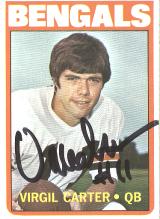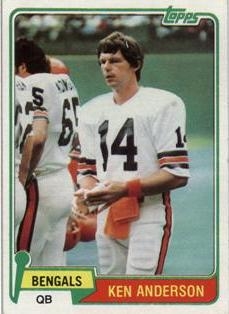Earlier this week, I discussed how Michael Lewis’ bestselling book, The Blind Side, tells the story of how Bill Walsh changed professional football by conceiving a superior “system” later termed the “West Coast Offense.” While I know many of our readers are probably not avid football fans, it’s worth learning a little about football to glean the important business and life lessons that Walsh’s story can teach us.
The topic we’re going to cover today concerns a principle that Walsh used to transform one of the worst performing teams of all time (The San Francisco 49ers) into three-time Super Bowl champions in the 1980s (you may need to read the previous article to understand today’s discussion).
Here is the principle: Bill Walsh questioned the status quo. When Walsh started coaching professional football in the late 1960s, football was primarily a running game. For each running attempt, a player typically gained 3.9 to 4.1 yards (depending on the statistical year considered), and had a 3% chance of fumbling the ball and turning it over to the opposing team.
Teams did pass the ball also, but at a much lower rate. Why? Because the average pass netted just slightly more yardage (4.9 yards on average) and resulted in an interception 6% of the time. Also, quarterbacks typically completed fewer than 50% of the passes. 
The general strategy for football teams at that time was to run the ball until they got into a pinch and needed a bunch of yards for a first down. Then, they’d chuck the ball downfield 20 yards or more and hope for the best. Of course, the desired outcome (a completed pass) didn’t happen very often, and the undesired outcomes (incompletions and interceptions) were common.
Walsh first started questioning the status quo more from necessity than genius. In 1968, he took a job as the Offensive Coordinator for the Cincinnati Bengals—an expansion team that had “comically inadequate football players.” Without the talent and brute strength necessary to run the football, the Bengals had no choice but to turn to passing if they had any chance of winning.
But unfortunately, their passing game was not that hopeful either. Their quarterback, Virgil Carter, had his own challenges. “Carter wasn’t able to get the ball more than 20 yards downfield in any form other than a desperate wobble,” explains Lewis.
If you think about it, Walsh was facing the same situation that many of you are facing today. Many companies have teams of individuals who are simply not talented enough to get the job done. Your “players” are operating in sales systems that were designed to take advantage of some extraordinary strengths that only a few people possess.
For real estate companies in particular, the status quo has been to recruit large numbers of agents with the hope of finding a few that can attune themselves to the existing system and be successful. As you know, this is a tough road and it is filled with a lot of incompletions and interceptions. I’ve spoken to many owners and executives who are growing very weary of the status quo. Maybe you feel the same way.
What did Bill Walsh do to solve his problem? He built a better system. More specifically, he built a system that played to the strengths of the players that were available to him. While Virgil Carter could not throw the ball very far, he was accurate and quick. Walsh used his strengths to design pass plays that were short and depended on precision and timing rather than brute strength and superhuman abilities.
 After implementing Walsh’s system, Virgil Carter, who had never completed more than half of his passes in a previous year, led the league in completion percentage (62.2%) and bumped his yard per attempt from 5.9 to 7.3 (remember, the league average was 4.9). In 1970, the Bengals went to the playoffs just two years after starting this process. In the playoffs, they put up a good fight against the Baltimore Colts in their final playoff game before the Colts went on to win the Super Bowl.
After implementing Walsh’s system, Virgil Carter, who had never completed more than half of his passes in a previous year, led the league in completion percentage (62.2%) and bumped his yard per attempt from 5.9 to 7.3 (remember, the league average was 4.9). In 1970, the Bengals went to the playoffs just two years after starting this process. In the playoffs, they put up a good fight against the Baltimore Colts in their final playoff game before the Colts went on to win the Super Bowl.
Here is the surprising part of this story: The next year, Virgil Carter was replaced by a little known quarterback from a division 3 college named Kenny Anderson. Walsh made his point loud and clear: It wasn’t the person in the quarterback position that created the successes, it was the superior nature of the system itself. Kenny Anderson went on to lead the NFL in total yards, completion percentage and yards per attempt (8.13) in 1974.
As business owners, it’s easy to fall victim to thinking that the business systems we have (or we’re given as the status quo from an industry that surrounds us) are the business systems we’re stuck with using. In this state, the only solution seems to be hiring bigger linemen and faster running backs.
Bill Walsh changed the status quo so that personnel factors played a diminishing role. He created a system so good that he could plug almost anyone (who happened to be a quarterback) into the system and it produced results. Take Bill Walsh’s lead..challenge the status quo and start to conceptualize your own system. Think about creating something that would keep you from playing to factors you can’t control.
This is a tough assignment, so don’t feel bad if the answers don’t come to you quickly. I’ll write more about Bill Walsh in my next article. There are few more strategies we can gain from him that may spur your thinking.
Editor’s Note: This article was written by Ben Hess. Ben is the Founding Partner and Managing Director of Tidemark, Inc. and a regular contributor to WorkPuzzle. Comments or questions are welcome. If you’re an email subscriber, reply to this WorkPuzzle email. If you read the blog directly from the web, you can click the “comments” link below.

